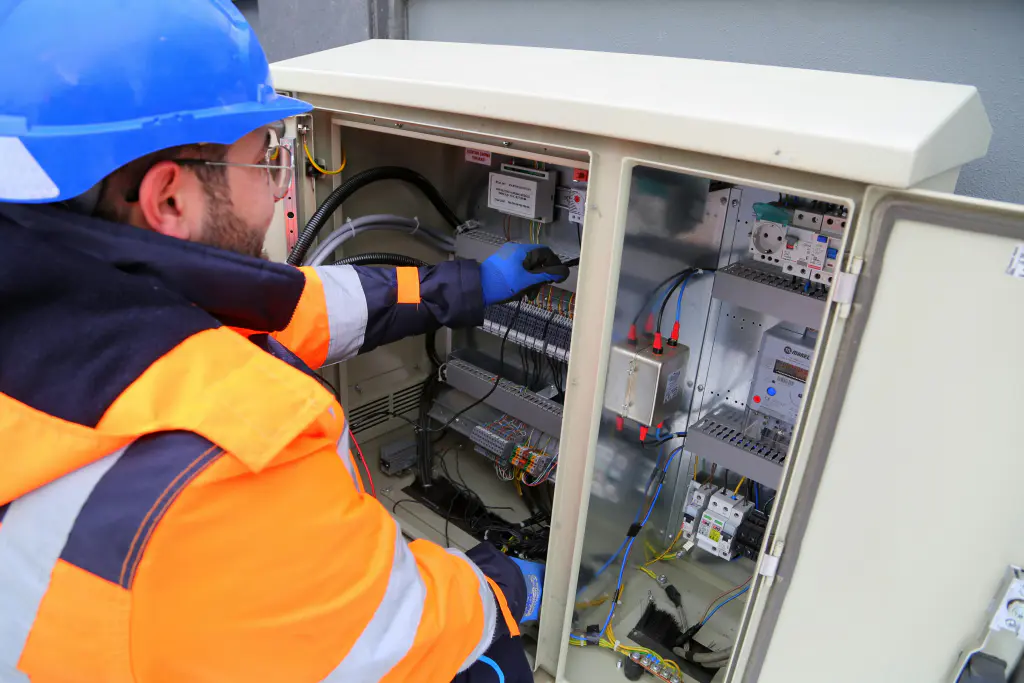As a landlord, the question of whether a new Electrical Installation Condition Report (EICR) is necessary for every new tenancy can be perplexing.
The importance of electrical safety cannot be understated, but the specifics of when to obtain a fresh EICR might not always be clear.
Understanding the implications of overlooking this requirement could be pivotal in safeguarding both your property and your tenants.

Let’s unravel the complexities surrounding this topic and shed light on why staying informed is crucial for maintaining a safe rental environment.
Understanding EICR Requirements
When considering the necessity of Electrical Installation Condition Reports (EICRs) in rental properties, understanding the specific requirements outlined by regulations and industry standards is paramount.
The testing frequency for EICRs is typically every 5 years, independent of any existing valid EIC. Property changes, unless involving a complete tenant turnover within the validity period, don’t mandate a new EICR. Electricians may recommend more frequent testing intervals based on specific property conditions.
It’s crucial to heed electrician advice regarding the necessity of EICRs. Validity periods are crucial factors to consider when determining the timing of EICR renewals. Following the recommended intervals ensures compliance with regulations and maintains electrical safety standards in rental properties.
Adhering to these guidelines guarantees that properties meet the required safety standards, promoting the well-being of tenants and fulfilling landlord obligations concerning electrical safety.
Insights on Electrician Recommendations
Insights into electrician recommendations regarding Electrical Installation Condition Reports (EICRs) offer valuable guidance on testing intervals and compliance with regulatory standards for rental properties. Electricians may advise specific testing intervals in EICR reports, including more frequent assessments at tenancy changes.
While NICEIC recommends an EICR every 5 years, some electricians might suggest different frequencies based on property specifics. Compliance with safety standards and compliance guidelines is crucial, with varying opinions from NICEIC and NAPIT registered electricians.
For properties with complete rewiring or new installations, an EICR may be necessary, even within the standard 5-year interval. Understanding these nuances is essential for landlords to ensure the safety of their tenants and adherence to legal regulations.
Therefore, staying informed about electrician advice, testing intervals, safety standards, compliance guidelines, and the impact of tenancy changes is paramount in maintaining electrical safety in rental properties.
Addressing Landlord Queries
Addressing queries from landlords regarding Electrical Installation Condition Reports (EICRs) entails clarifying regulatory standards and ensuring compliance with safety guidelines.
Landlord responsibilities include ensuring that EICRs are conducted every 5 years, even if there’s a valid report in place, to uphold electrical safety. While a complete change of tenants during the validity period doesn’t mandate a new EICR, electricians may advise more frequent testing based on specific property conditions.

It’s crucial for landlords to communicate testing frequency to tenants to raise awareness of electrical safety measures. Seeking electrician guidance can provide insights into tailored testing intervals, although differing recommendations from various sources can lead to confusion.
To achieve compliance clarity, discussions with professionals like NICEIC and NIC can shed light on the most appropriate EICR requirements for the property, ensuring that landlords meet regulatory obligations and maintain a safe environment for tenants.
Importance of Tenant Communication
Effective communication with tenants regarding electrical safety certificates is essential for ensuring compliance and promoting a safe living environment. Tenant notifications should include details on inspection intervals, emphasizing the importance of regular checks for maintaining electrical safety.
Document sharing plays a crucial role in transparency and compliance clarity, with landlords providing tenants copies of the EIC and Building Regulations Compliance Certificate. This ensures tenants are aware of the property’s electrical safety status and their rights to a secure living environment.
Clear communication regarding certificate distribution helps tenants understand the validity of the documents and the responsibilities they entail. By engaging in open dialogue and sharing essential information, landlords can empower tenants to prioritize electrical safety and contribute to a harmonious tenancy experience.
Interpretation of Government Regulations
To understand the compliance requirements for electrical safety in rented properties, a detailed examination of government regulations regarding EICR intervals and documentation is imperative. Regulatory clarity plays a vital role in ensuring landlords meet safety standards.
Government guidelines mandate specific compliance intervals for EICR based on the latest report, emphasizing the importance of regular inspections to uphold safety standards. Landlord duties encompass adhering to these regulations to guarantee electrical safety in rented properties.
Clarity on when EICRs are required is essential to avoid misunderstandings and ensure the safety of tenants. By following the safety standards set forth in government regulations, landlords can fulfill their duties and create a secure living environment for their tenants.
Understanding these regulations is crucial for landlords to navigate compliance requirements effectively and uphold the necessary safety standards in rented properties.
Guidelines for Compliance and Safety
When ensuring compliance and safety in rented properties, it’s crucial to meticulously follow government regulations and guidelines regarding electrical inspections and certification.

Compliance standards dictate that landlords must conduct Electrical Installation Condition Reports (EICRs) at specified testing intervals, typically every 5 years. These safety regulations ensure that electrical installations are safe for tenants and meet legal requirements.
Landlords hold the responsibility to provide valid electrical certificates, including EICs and Building Regulations Compliance Certificates, especially for properties with new wiring or complete rewiring. It’s essential to understand that even if a property has undergone recent rewiring, an EICR may still be necessary to guarantee ongoing safety and compliance.
Frequently Asked Questions
Can Landlords Conduct Their Own Electrical Inspections Instead of Hiring a Qualified Electrician for an Eicr?
I cannot conduct DIY inspections for EICRs. It’s my responsibility to hire a qualified electrician for safety and legal compliance. Cutting corners on electrical safety poses risks to tenants and me, outweighing any potential cost savings.
Are There Any Exceptions to the 5-Year EICR Requirement for Certain Types of Properties or Tenancies?
I must adhere to the 5-year EICR requirement, with exceptions for properties like new builds or fully rewired ones. Regulatory waivers are not granted based on tenancy duration; inspection frequency follows the latest report’s intervals.
How Can Landlords Ensure That the Electricians They Hire Are Properly Certified by Organizations Like NICEIC or Napit?
Ensuring safety regulations compliance and landlord responsibility for electrical inspections demand verifying certification standards of electricians. Qualified professionals by organizations like NICEIC or NAPIT guarantee adherence to regulations, vital for property safety.
Are There Any Financial Assistance Programs Available for Landlords to Cover the Costs of EICR Inspections?
Government funding may aid landlords with EICR inspection costs through financial assistance programs. These support systems alleviate financial burdens, ensuring compliance with regulations while enhancing electrical safety in rented properties. Assistance programs offer vital landlord support.
What Are the Consequences for Landlords Who Fail to Comply With the EICR Requirements Outlined in Government Regulations?
Neglecting EICR obligations poses legal risks for landlords, jeopardizing tenant safety. Failure to comply with regulations results in heavy penalties. Adhering to inspection requirements is crucial to protect tenants, meet legal obligations, and avoid repercussions.
Conclusion
In conclusion, it’s essential for landlords to prioritize electrical safety by obtaining a new EICR for every new tenancy.
By following government regulations, addressing electrician recommendations, and effectively communicating with tenants, landlords can ensure compliance and maintain a safe living environment.
Stay proactive in upholding electrical safety standards in rental properties to protect both tenants and property investments.









